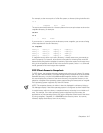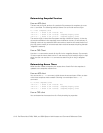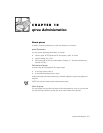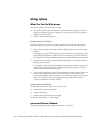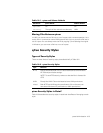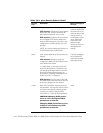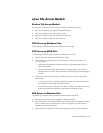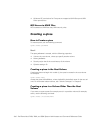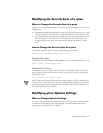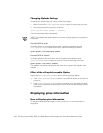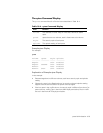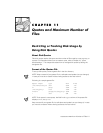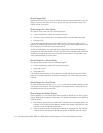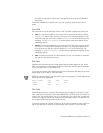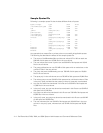
qtree Administration 10-7
0RGLI\LQJWKH6HFXULW\6W\OHRIDTWUHH
:KHQWR&KDQJHWKH6HFXULW\6W\OHRIDTWUHH
There are many circumstance under which you might want to change qtree style. Two
examples are
Because the default security style of a qtree is that of its root volume, you might
want to change the security style of a qtree after creating it to the style you want.
You might also want to change the security style to accommodate other users or
files; for example, if you start with an NTFS qtree and subsequently want to
include UNIX files and users, you might want to change the qtree to a mixed
qtree.
+RZWR&KDQJHWKH6HFXULW\6W\OHRIDTWUHH
To change the security style of a qtree, use the following command:
qtree security [
pathname
[mixed | ntfs | unix]]
([DPSOH:LWKDTWUHH
To change the security model of /vol/users/docs to be the same as Windows NT, use:
qtree security /vol/users/docs ntfs
([DPSOH:LWKD9ROXPH
To change the security model of the root directory of the users volume to mixed so
that, outside of a qtree in the volume, one file can have NTFS security and another
UNIX security, use
TWUHHVHFXULW\YROXVHUVPL[HG
NOTE: When you create an NTFS qtree or change a qtree to NTFS, by default, every
Windows user is given full access. You must change the permissions if you want to
restrict access to the qtree for some users. If you do not set NTFS file security on a
file, UNIX permissions are enforced.
0RGLI\LQJTWUHH2SORFNV6HWWLQJV
:KHQWR&KDQJH2SORFNV6HWWLQJV
You might want to change qtree oplocks settings when you add or remove software,
or when the kind of data you are using changes. For detailed information about
oplocks, see Using Oplocks in Chapter 7.



